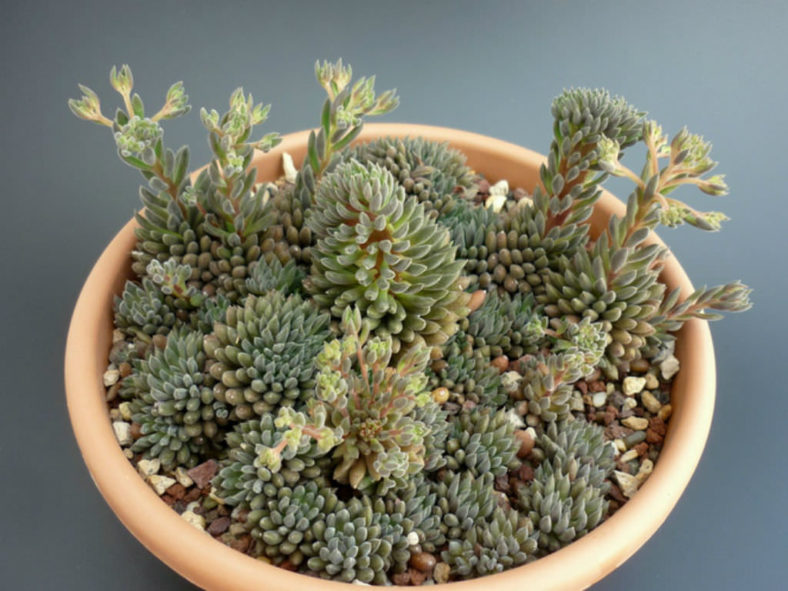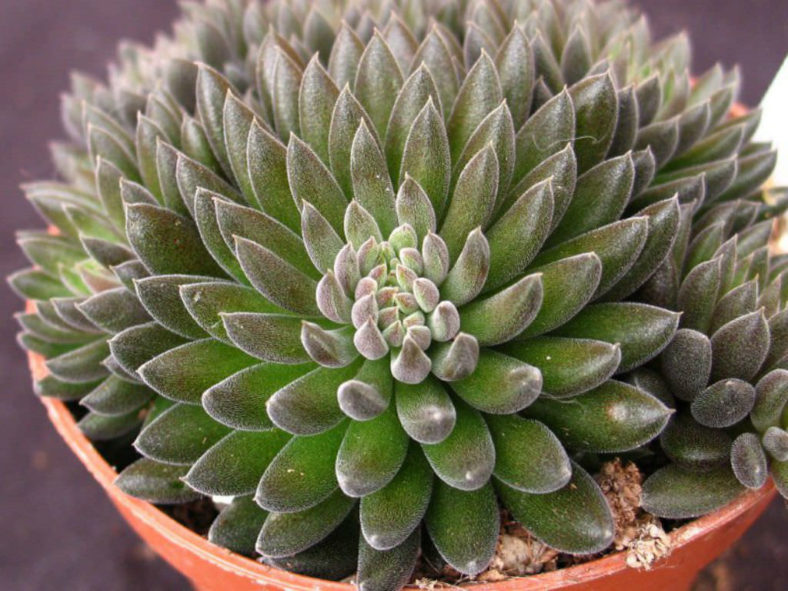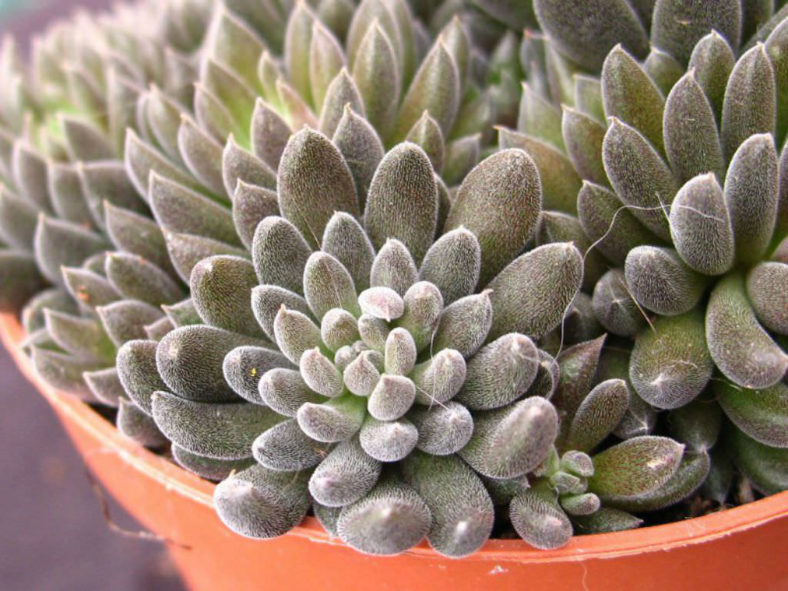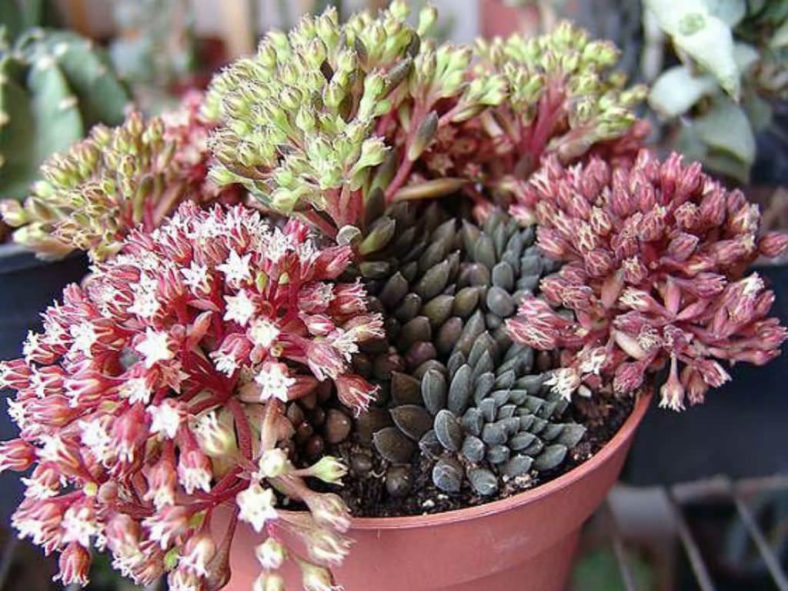Scientific Name
Sinocrassula yunnanensis (Franch.) A. Berger
Common Name(s)
Chinese Jade
Synonym(s)
Crassula yunnanensis, Sedum indicum var. yunnanense, Sedum indicum var. yunnanensis, Sedum pyramidatum
Scientific Classification
Family: Crassulaceae
Genus: Sinocrassula
Origin
Sinocrassula yunnanensis is native to southwestern China. It occurs in Yunnan province at elevations that range from 8,200 to 8,860 feet (2,500 to 2,700 m).
Description
Sinocrassula yunnanensis is a small succulent that forms dense rosettes of dark bluish-green leaves with purple mottling, turning black in full sun. The rosettes can grow up to 1.4 inches (3.5 cm) in diameter and produce offsets, forming a dense clump over time. The leaves are half-round with a convex lower surface and somewhat flat upper surface, and end in a sharp point, measuring up to 1 inch (2.5 cm) in length and up to 0.2 inches (0.5 cm) in width. They are densely covered with short, soft hairs.
In fall and early winter, the rosettes elongate in densely leafy, finely papillose flower stalks with dense, flattish clusters of light yellowish to yellowish green flowers with an orange-red flush in full sun. The plant is monocarpic, which means each rosette blooms only once and then dies, replaced by the offsets.
Sinocrassula yunnanensis crests more often than other succulents, and besides rosettes, crested inflorescences are also not rare.

Hardiness
USDA hardiness zones 7a to 11b: from 0°F (-17.8°C) to 50°F (10°C).
How to Grow and Care
Crassulas are easy to grow but susceptible to mealybugs and fungal diseases. As with all succulents, overwatering is sure to be fatal, so err on the side of too dry rather than too wet. Never let your plant sit in water. If you water from beneath by allowing the plant to sit in a saucer, ensure you pour off any excess water after a few minutes.
These succulents are generally started by division, offsets, or leaf cuttings. Crassulas can be easily propagated from a single leaf. Place leaves into a potting mix for succulents and cover the pot until they sprout.
Repot as needed, preferably during the warm season. To repot your Crassula, ensure the soil is dry before repotting, then gently remove the pot. Knock away the old soil from the roots, removing any rotted or dead roots. Treat any cuts with a fungicide. Place the plant in its new pot and backfill it with potting soil, spreading the roots out as you repot. Leave the plant dry for a week or so, then water lightly to reduce the risk of root rot.
See more at How to Grow and Care for Crassula.
Forms
Links
- Back to genus Sinocrassula
- Succupedia: Browse succulents by Scientific Name, Common Name, Genus, Family, USDA Hardiness Zone, Origin, or cacti by Genus
Photo Gallery
Click on a photo to see a larger version.


